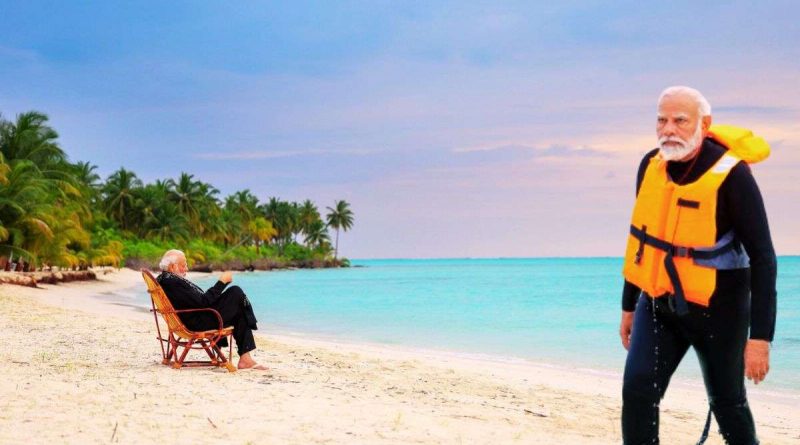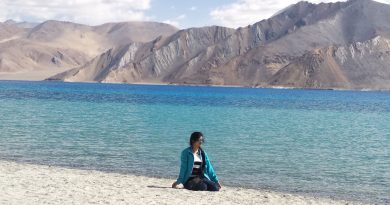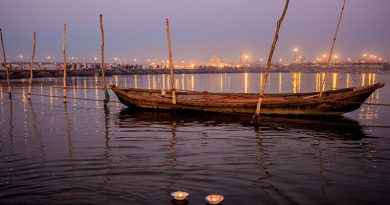Beauty of Lakshadweep: A Tropical Paradise in the Indian Ocean
Lakshadweep, an archipelago nestled in the heart of the Arabian Sea, is a tropical haven that captures the imagination with its pristine beauty, coral reefs, and crystal-clear waters. This group of islands, located off the southwestern coast of India, is renowned for its breathtaking landscapes, diverse marine life, and vibrant culture. In this article, we will delve into the enchanting allure of Lakshadweep, exploring its geography, culture, and the myriad experiences it offers to travelers seeking a slice of paradise.
Geography and Formation:
Lakshadweep, meaning “a hundred thousand islands” in Malayalam, is a group of 36 coral islands and atolls. Situated about 220 to 440 kilometers off the coast of Kerala, these islands are scattered across 32 square kilometers of the Arabian Sea. The archipelago is divided into three main subgroups: Amindivi, Laccadive, and Minicoy Islands. These islands are a result of coral growth and sedimentation over millions of years, forming spectacular coral atolls and lagoons.
Biodiversity and Marine Life:
One of the most captivating aspects of Lakshadweep is its rich biodiversity, both on land and underwater. The coral reefs surrounding the islands are teeming with a kaleidoscope of marine life, making it a paradise for snorkelers and divers. The clear waters host a myriad of fish species, including butterflyfish, parrotfish, and surgeonfish. The coral gardens provide a colorful backdrop, creating an underwater wonderland for those exploring the vibrant reefs.
Lakshadweep is also a crucial nesting ground for various species of turtles, including the green sea turtle and hawksbill turtle. The islands are home to numerous bird species, making it a haven for birdwatchers. The mangrove forests and lagoons further contribute to the archipelago’s ecological diversity, providing a habitat for various marine and avian species.
Culture and Traditions:
Lakshadweep has a distinct cultural identity shaped by its history, geography, and predominantly Muslim population. The local language is Malayalam, and the people follow a unique blend of Islamic traditions and customs. The traditional art forms of the islands, such as Kolkali dance and Lava (handicrafts), reflect the cultural richness of the region.
The communities in Lakshadweep are close-knit, and the people are known for their warm hospitality. Fishing and coconut cultivation are integral to the islanders’ way of life, providing sustenance and livelihoods for many. The vibrant festivals, including Eid, Milad-un-Nabi, and the annual Boat Race, showcase the cultural diversity and fervor of the people.
Tourist Attractions:
Lakshadweep, with its unspoiled beauty, attracts tourists seeking a tranquil escape. Each island offers a unique charm, and some of the must-visit places include:
- Agatti Island: Known for its stunning coral reefs and lagoons, Agatti is a popular spot for water sports such as snorkeling and scuba diving. The pristine beaches and turquoise waters make it an ideal destination for relaxation.
- Bangaram Island: Famous for its serene beaches and vibrant coral reefs, Bangaram is a paradise for nature lovers. The island’s calm and peaceful ambiance makes it an excellent spot for honeymooners and those seeking a romantic getaway.
- Kavaratti Island: The capital of Lakshadweep, Kavaratti is known for its white-sand beaches and the Ujra Mosque, an architectural marvel. The island also offers water-based activities like kayaking and glass-bottom boat rides.
- Kalpeni Island: This atoll is renowned for its three uninhabited islets called Tilakkam, Pitti, and Cheriyam. Visitors can explore the picturesque lagoons, indulge in water sports, and witness the unique charm of village life.
- Minicoy Island: The southernmost island of the archipelago, Minicoy is distinct for its culture, known as Mahl. The island boasts a 300-foot-tall lighthouse, pristine beaches, and a rich maritime heritage.
Preservation and Sustainable Tourism:
Preserving the delicate ecosystem of Lakshadweep is paramount to ensure the longevity of its natural beauty. The local administration, along with environmental organizations, has implemented measures to promote sustainable tourism. Strict regulations on waste disposal, fishing practices, and the number of visitors to certain ecologically sensitive areas are in place to safeguard the islands’ fragile ecosystems.
Conclusion:
Lakshadweep stands as a testament to nature’s beauty, offering a haven of tranquility and natural wonders. Its pristine beaches, vibrant coral reefs, and rich cultural heritage make it a destination like no other. As tourism continues to grow, it is crucial to balance the influx of visitors with responsible and sustainable practices to protect the unique ecosystems that define Lakshadweep. Whether you seek adventure in the azure waters, cultural exploration, or simply a peaceful retreat, Lakshadweep beckons with open arms, inviting you to discover its hidden treasures and create memories that last a lifetime.



